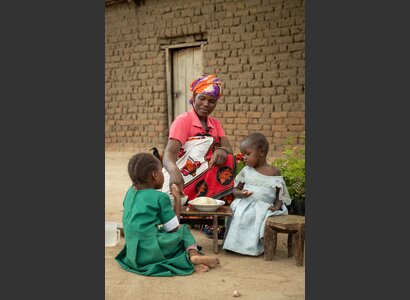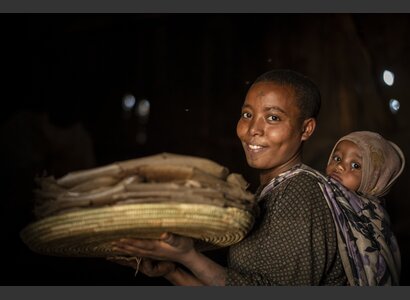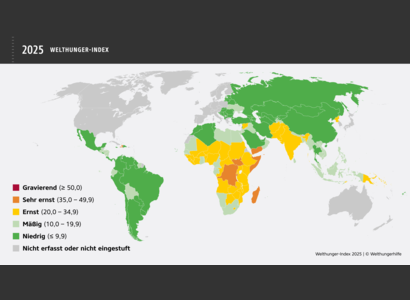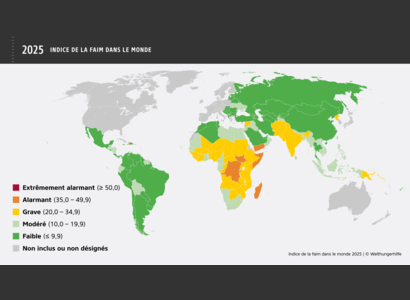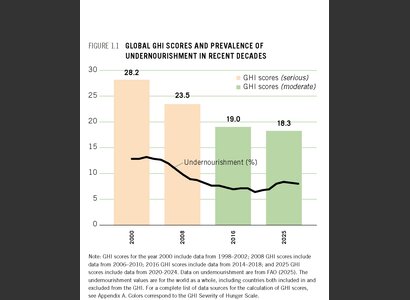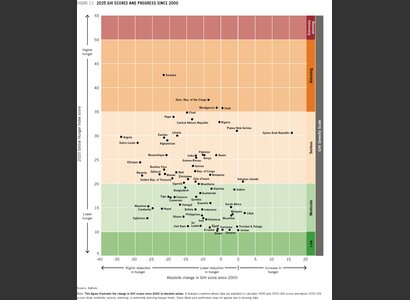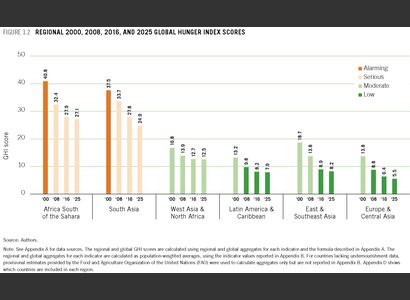The international community wants to end hunger by 2030 — in alignment with the UN's goal. But the 2025 Global Hunger Index shows that progress has stalled and hunger is on the rise again in many regions. However, there are also positive examples such as Nepal, which has consistently invested in combating hunger — with international aid. Donor countries should continue to promote this type of support instead of cutting development cooperation.
"Hunger is not a law of nature. If rich and affected countries take their political responsibility seriously, progress can be made — as examples such as Nepal and Bangladesh show. For Switzerland, this means that instead of further cutting the budget for development cooperation, targeted investments must be made in reducing hunger," says Regula Rytz, President of Helvetas.
The UN has set itself the goal of living in a world without hunger by 2030. Although significant progress was made by 2016, the decline has stagnated since then, as confirmed once again by the Global Hunger Index 2025 published today. The hunger situation is serious or alarming in 42 countries. “Zero Hunger” by 2030 is thus a distant prospect. The reasons for the stagnation are manifold — and they are man-made.
Armed conflicts remain the biggest driver of hunger. They hamper food supplies and force millions of people to flee their homes. The number of people suffering from famine — mainly in Gaza and Sudan — more than doubled between 2023 and 2024. Climate change also causes hunger because, among other things, extreme weather events result in crop failures. In addition, economic uncertainties and shifts in political priorities are leading many countries to cut their development cooperation budgets.
Sub-Saharan Africa hardest hit
The region most affected by hunger continues to be sub-Saharan Africa, where high rates of malnutrition and child mortality are recorded. South Asia is also severely affected; it’s home to 281 million people, or almost 40% of all undernourished people worldwide. In Latin America and the Caribbean, the situation has actually worsened since 2016 — caused by inflation, debt and increasing poverty. The hunger situation is particularly alarming in Burundi, the Democratic Republic of Congo, Haiti, Madagascar, Somalia, South Sudan and Yemen.
Success in combating hunger in Nepal and other countries
Despite everything, the 2025 Global Hunger Index report also notes progress in some countries, such as Nepal, Bangladesh, Somalia, Togo, Uganda, Rwanda and Madagascar.
Targeted political measures can bring about significant improvements, as the example of Nepal shows. The country has seen the largest decline in hunger in the region. Nepal has enshrined the right to food in its constitution and legislation and introduced comprehensive nutrition plans. With the support of organizations such as Helvetas, health, water, sanitation and hygiene have also been improved for many people.
For such progress to be possible in other countries, budgets for development cooperation and humanitarian aid must be increased. This is the only way to effectively and sustainably eliminate global hunger.
_ _ _
The Global Hunger Index is published by Welthungerhilfe, Concern Worldwide and the Institute for International Law of Peace and Security (IFHV) — and with the support of Helvetas since this year.
_ _ _
Methodology and data basis
The Global Hunger Index (GHI) is a tool for comprehensively measuring and tracking hunger at the global, regional and national levels over recent years and decades. GHI values are calculated using a formula that combines four indicators (see below) to reflect the multidimensional nature of hunger.
In 2025, data for 136 countries that met the criteria for inclusion in the GHI were evaluated. GHI scores were calculated for 123 of these countries based on data from 2020 to 2024. The data comes from published sources of the United Nations — including the Food and Agriculture Organization (FAO), the World Health Organization (WHO), UNICEF, and the UN Inter-agency Group for Child Mortality Estimation — as well as from the World Bank and the Demographic and Health Surveys Program.
Four indicators:
- Malnutrition: Percentage of the population that is undernourished — reflects insufficient calorie intake.
-
Stunting: Percentage of children under five who are stunted (too small for their age) — an indication of chronic malnutrition.
-
Child wasting: Proportion of children under five who are emaciated (too thin for their height) — an indication of acute malnutrition.
-
Child mortality: Proportion of children who die before their fifth birthday.
Additional information:
GHI report available for download
Summary of the GHI report available for download
GHI event in Bern and Online (in English): Global Hunger Index Event 2025 Bern| Helvetas
Website of the Global Hunger Index (GHI)




